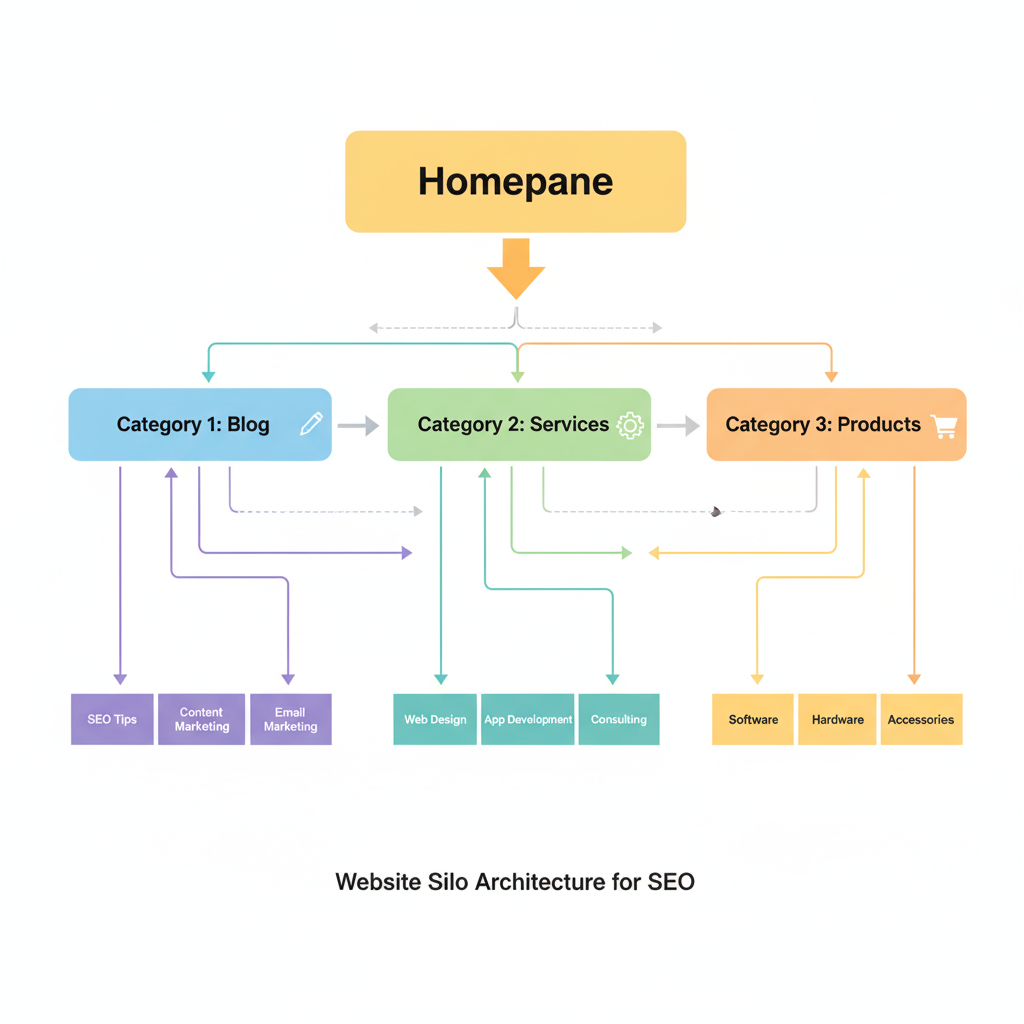Introduction
Search engines love order, not chaos. Imagine walking into a library where books are scattered everywhere—no sections, no categories, nothing. Frustrating, right? Now imagine a library where every book is neatly categorized by subject. That’s exactly how Google wants your website to be structured: organized, logical, and easy to navigate.
This is where Silo Structure comes in. It’s not just another SEO buzzword—it’s a proven way to skyrocket your site’s rankings, improve user experience, and drive laser-targeted leads.
What is a Silo Structure?
A silo structure is the method of organizing website content into categories and subcategories, grouping related topics together. Think of it like building a digital pyramid:
- At the top: your pillar page (broad topic)
- Beneath: cluster pages (related subtopics)
- Interconnected with: internal links that keep users and search engines inside your content ecosystem.
This structure helps both users and Google understand what your site is about, improving topical authority.

Why Silo Structure is Crucial for SEO
- Boosts Relevance & Topical Authority
Grouping content signals to Google that you’re an expert in that niche. - Improves Crawlability
Internal links help search engines discover, index, and rank your pages faster. - Enhances User Experience
Visitors can easily find what they’re looking for, increasing time on site. - Supports Better Rankings
Well-structured silos distribute link equity (SEO juice) across your site.
Types of Silo Structures
1. Physical Silo (URL-Based)
Example:/services/seo//services/web-design//services/ui-ux/
2. Virtual Silo (Internal Linking)
Even if pages live in different directories, you can connect them with strategic internal links.
Best practice? Use both.
How to Create a Silo Structure Step by Step
- Choose Core Topics (Pillars)
Example for Brand Createrz:- Website Design
- SEO Services
- Digital Marketing
- UI/UX Design
- Create Supporting Content (Clusters)
Under “SEO Services,” you can have:- On-Page SEO Guide
- Off-Page SEO Tactics
- Technical SEO Checklist
- Local SEO Strategies
- Internal Linking Strategy
- Link cluster pages back to the pillar page.
- Interlink clusters with each other.
- Optimize Navigation & Menus
Your website’s header and sidebar should reflect the silo. - Use Breadcrumbs
Example:Home > Services > SEO > Local SEO
Example Silo Structure for an Agency Website
Pillar Page: SEO Services
- Cluster 1: On-Page SEO Guide
- Cluster 2: Technical SEO
- Cluster 3: Local SEO Tips
- Cluster 4: Link Building Strategies
Each subpage links back to the pillar, reinforcing authority.
Also Read: SEO in 2025: Rank Your Business Website on Google
Mistakes to Avoid
❌ Creating thin content (clusters with no depth).
❌ Randomly linking to unrelated pages.
❌ Ignoring site speed and UX (structure won’t save a bad website).
❌ Keyword cannibalization (competing with yourself for rankings).
Future of Silo Structure in SEO
With Google leaning heavily into semantic search and AI-driven results, silos will evolve into topic clusters + contextual linking. But one thing won’t change: websites with organized, topic-focused content will always outrank scattered sites.
Conclusion
If you want to dominate search rankings in 2025, building a silo structure is non-negotiable. It transforms your website from a messy collection of pages into a well-organized knowledge hub that search engines (and humans) love.
At Brand Createrz, we design websites with SEO-friendly structures that don’t just look good—they convert and rank. 🚀


